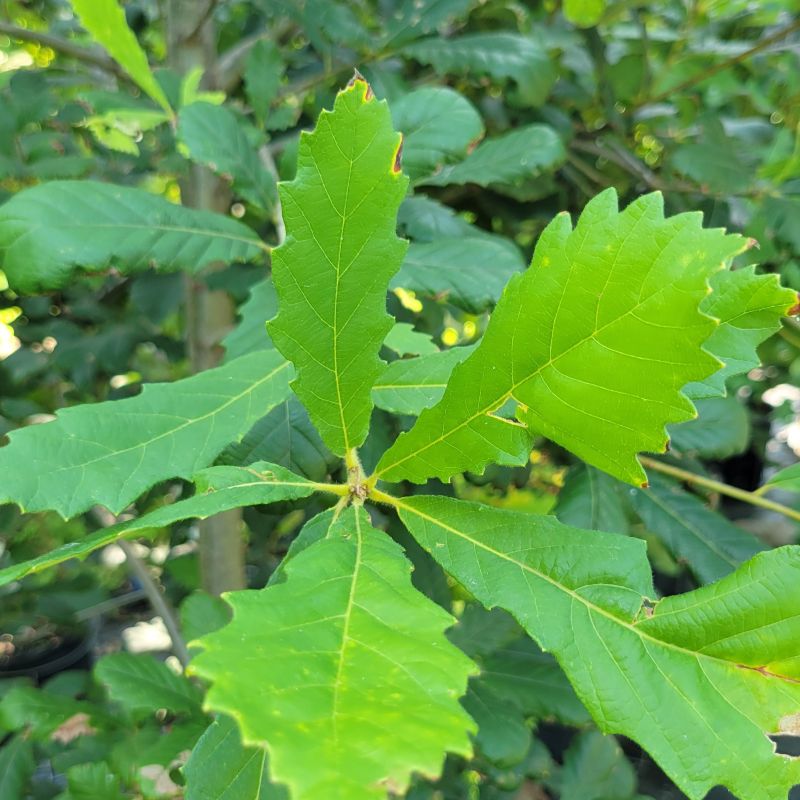Quercus michauxii (Swamp Chestnut Oak) Unity Grown
- Low stock - 5 items left
- Inventory on the way
Quercus michauxii, commonly referred to as swamp chestnut oak, is a large oak with a moderate growth rate, with its common name referring to the similarity of the trees' leaves to those of unrelated chestnut trees (Genus Castanea), producing a more spiky shape rather than the usual multi-lobed oak-leaf shape; leaves also turn an attractive dark red in the fall. Quercus michauxii can grow to between 40' and 100' tall depending on soil conditions, but occasionally reaches towering heights of over 150'. Swamp chestnut oak is found in nature in low-lying swampy areas, and especially in areas with wetter, acidic soils rich in loam or sand; since it naturally prefers swampier areas, Quercus michauxii is a great choice for naturalization and rehabilitation projects in wet, low-lying areas or for planting near bodies of water -- even though swamp chestnut oak prefers wetter conditions, drainage is still important, and they may not fare as well in standing water as Nuttall (Quercus texana) or overcup oak (Quercus lyrata).
Swamp chestnut oak, like all other oaks, produces acorns which, for this species, are large with shaggy or scaly caps; unlike most other oaks, swamp chestnut acorns are sweet and readily edible without the need to boil them first. Aside from their snackability, swamp chestnut acorns are also ecologically valuable to a number of species including white-tailed deer, cattle, and small mammals as well as turkeys and woodpeckers. In addition to acorn value, many Quercus species are regarded as important keystone plants for their support of larval butterflies and moths, and Quercus michauxii is no different, acting as a host to several species of hairstreak butterfly and duskywing moths, among others.








